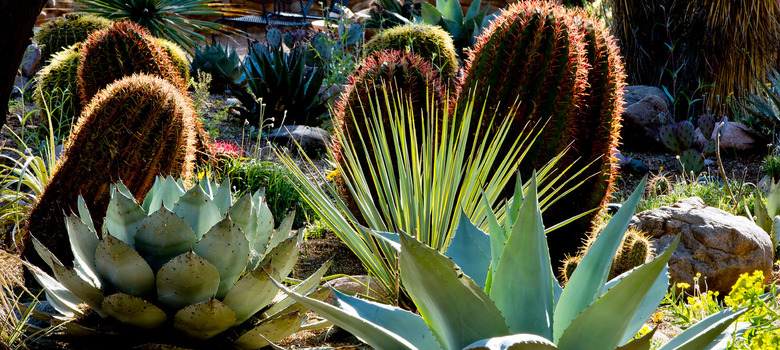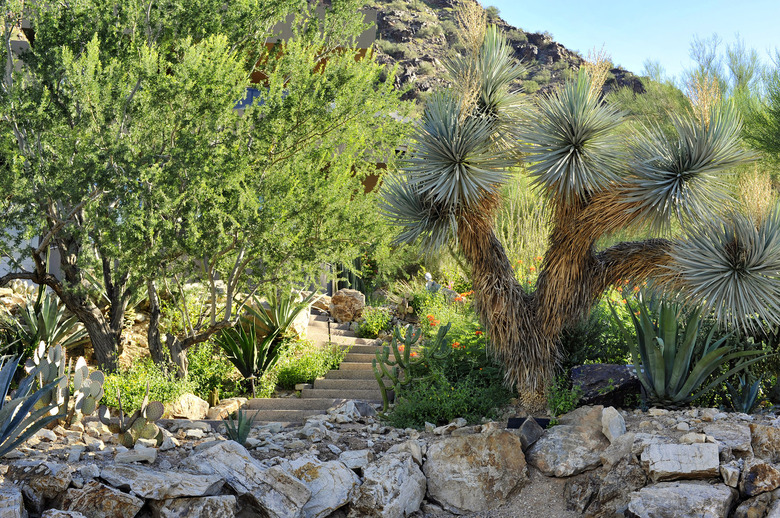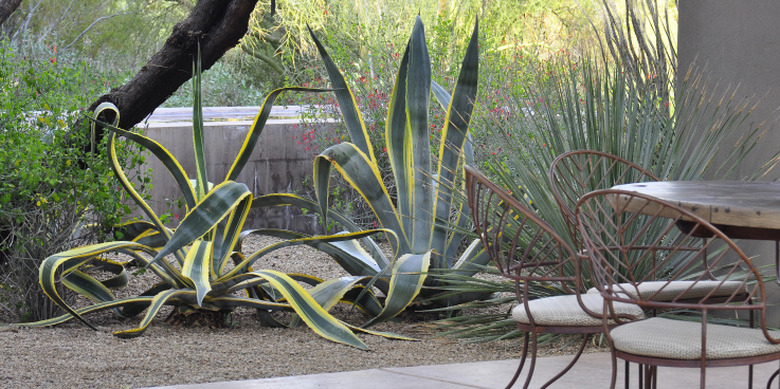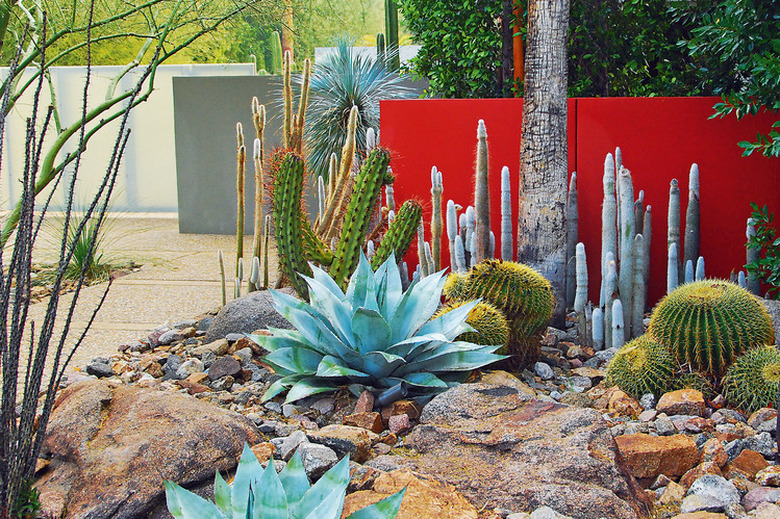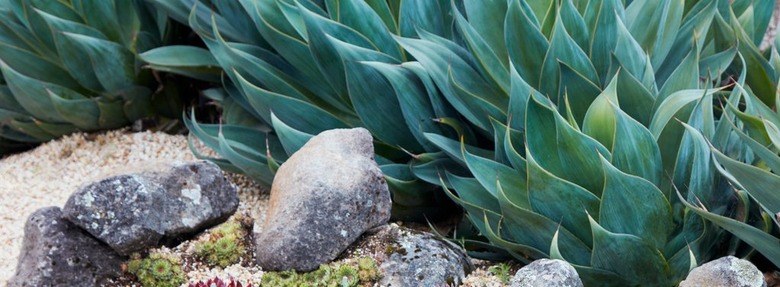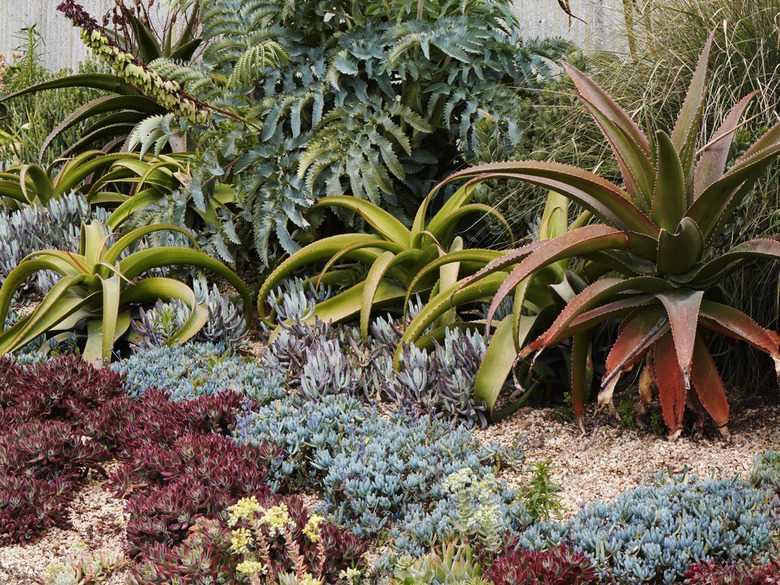Tips For Designing A Desert Garden
Deserts are, by definition, regions where precipitation is scarce. The scarcity of water makes it precious—and also very powerful as a design element. Principal and ever-present considerations in desert garden design are drought tolerance and water usage. Not all deserts are the same, of course, and high deserts will experience conditions different from those at lower elevations. The most successful desert gardens will reflect the plant varieties that are native to the specific area.
Design a Desert Garden That Mimics the Desert
Design a Desert Garden That Mimics the Desert
Like any garden design, the best design for desert garden is one that effectively mimics the aesthetics of the local environment. Arid desert climates generally yield a landscape that is sparsely vegetated and spacious, with generous swaths of open sky. Likewise, many desert gardens are spare and uphold the natural spaciousness by limiting the variety and density of plantings. A good desert garden presents itself as a focused version of the wider landscape, with spare vegetation that promotes controlled water usage.
Tip
When planning a desert garden, it's important to take into account the landscape outside of the garden's boundaries. By introducing elements that echo the character of the surrounding terrain and by orienting your garden to flow visually into that landscape, you can effectively appropriate the surroundings into your desert garden experience.
In addition to choosing plants that demand little water, part of an effective desert garden design is to make the most of rainfall when it does occur. Permeable surfaces such as gravel or sand-set pavers capture the rain where it falls, where it can be used by plants rather than running off. A grassy lawn will also capture rainfall, but grass demands a constant supply of water whether it rains or not. In a desert environment, grass is unnatural, and even though it offers an attractive contrast to the omnipresent rock and sand, grass requires more than its share of resources and attention to keep it thriving. Unless you are willing to devote disproportionate amounts of time and water resource for the sake of a lawn, it's best to use grass in your garden design sparingly, if at all. As an alternative, consider high-quality artificial turf.
In a Desert Garden, Water is Powerful
In a Desert Garden, Water is Powerful
Its scarcity makes the presence of water in a desert garden notable and dramatic, and the splash of falling water can be relaxing and cooling. The arid desert conditions foster a high rate of evaporation, however. While a broad, still pool will deliver eye-catching reflections of the sky, its extensive surface area means that maintaining a consistent water level against evaporation will require continuous replenishment. A better choice may be a small fountain or pool with a circulating pump that uses motion to make the most of a minimal amount of water.
Every Desert Garden Needs Some Shade
Every Desert Garden Needs Some Shade
The intense overhead sun of the desert requiress some shady relief in your garden. Desert-loving trees, such as mesquite, can offer some of that shade, but it's likely that you'll also want to construct a pergola or provide shade screens or patio umbrellas for respite from the sun. Indigenous materials suitable for constructing a natural pergola are limited in a desert environment, so here's an opportunity to creatively use contemporary materials and bold colors to equip your garden with sun protection that is striking and effective.
Add Some Drama to Your Desert Garden
Add Some Drama to Your Desert Garden
Many desert plants are arrestingly sculptural and benefit by being silhouetted against a backdrop of whitewashed or painted adobe or cement. If you have such a wall, incorporate it into your garden design to dramatize the inimitable forms of a selection of cactus, agave and yucca. You could also build a freestanding wall of adobe or cement for the purpose of highlighting succulent specimens and perhaps for delineating a garden "room". Because many desert plants range in color from bluish green to silvery gray, consider painting your backdrop wall a contrasting warm color.
Desert Gardens Are Not All Cactus
Desert Gardens Are Not All Cactus
The plantings in your desert garden need not be limited to succulents. There are many other drought-tolerant plants that can add softness, color and variety. When sown into garden beds, native wildflowers such as Mexican gold poppies and desert bluebells will lie dormant until the rain comes, then germinate and bloom to provide an ephemeral episode of color. Water-thrifty plants from other dry regions, such as lamb's ears, ornamental grasses and coneflowers, can be used to give your garden greater diversity, but be sure you know their water requirements; it's wise to group plants with similar requirements together.
Focus Your Garden to Minimize Maintenance
Focus Your Garden to Minimize Maintenance
Desert gardens, by their nature, require less intensive maintenance than many other garden types, but if you really want to limit the attention your garden requires, consider creating an oasis. A garden oasis is a defined and contained area within the surrounding paving. It's where all the plantings—and a water feature if you wish—are concentrated, leaving the remainder of the hardscape open for seating, a fire pit, or other features.
Tip
When you choose native plants for a desert garden, you are not only assured that your plantings are appropriate for the climate but are also welcoming in the ecosystem of your area. In choosing indigenous plants, you invite the native birds and insects to populate your garden, making it a livelier place.
Planting Your Desert Garden
Planting Your Desert Garden
Your local garden supply store should be able to provide native varieties suitable for your region and advice on how to plant them. It's tempting to consider gathering wild specimens, but that's prohibited in most places. Alternatively, if you have suitable specimens growing wild on your property, it's acceptable to relocate them to a more advantageous location. Transplanting cactus and other succulents can be tricky, so make sure you understand how to do it correctly. If you have the patience to let your garden develop slowly, you can propagate cactus and other succulents from cuttings.
The plants that are native or suitable for your locale, and thus for your desert garden, will vary with your planting zone, your altitude and other factors but here are some generally recommended for desert gardens:
- Organ pipe cactus
- Barrel cactus
- Prickly pear cactus
- Agaves
- Common sotol
- Salvia
- Hairy desert sunflower
- Desert marigold
- Penstemon
Shrubs and Trees
- Shrubby germander
- Brittlebush
- Mexican sunflower
- Skunkbush sumac
- Palo verde
- Sweet acacia
- Bougainvillea
- Mesquite
- Desert willow
- Chitalpa
